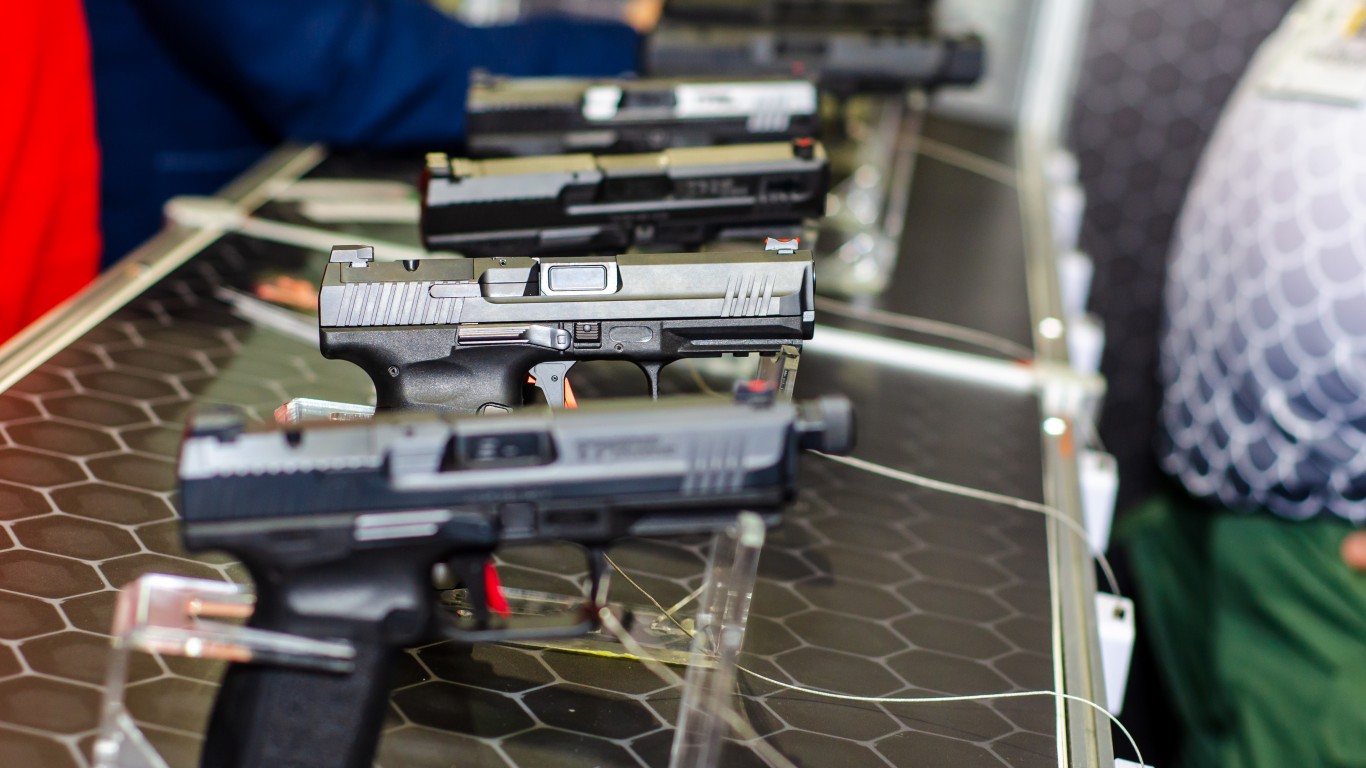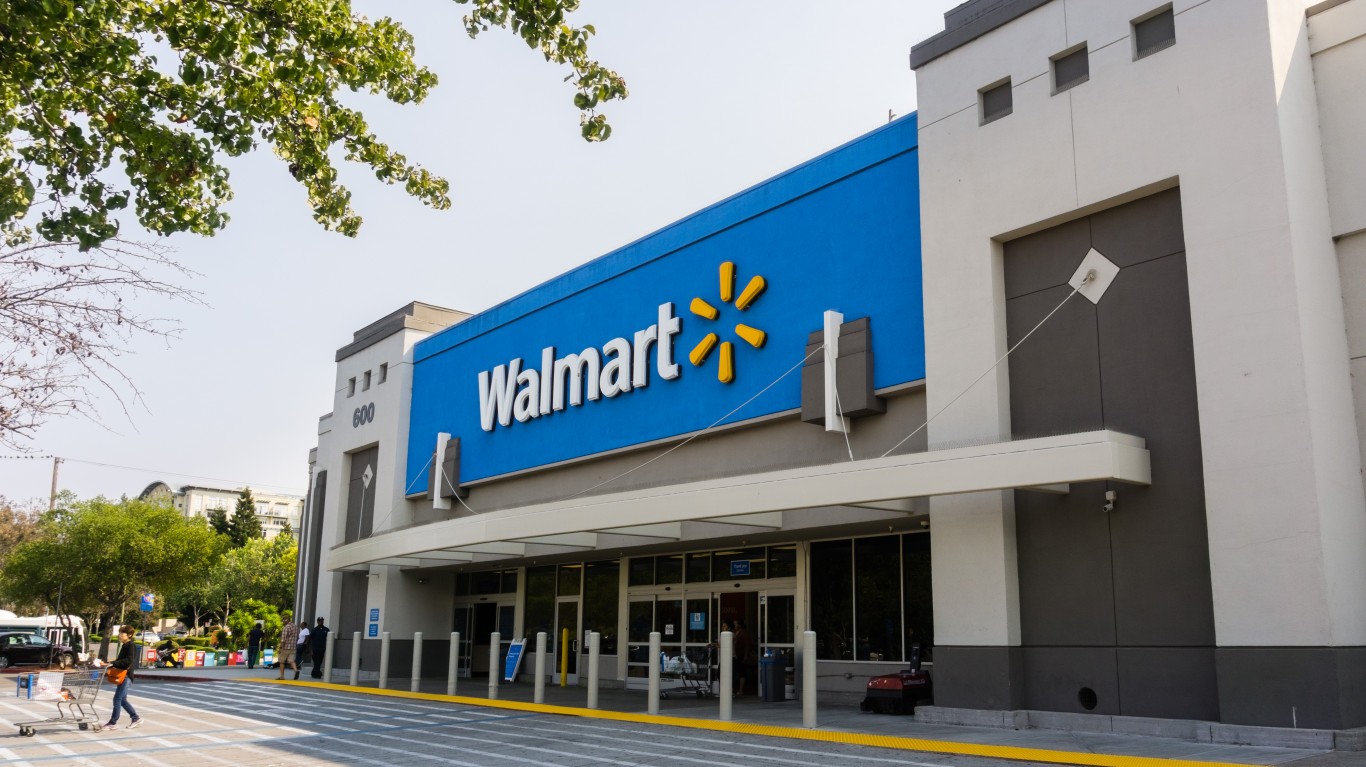
As the 1980s said goodbye and the world moved into a new era in the 1990s, new companies would finally arrive on the Fortune 500. While staple names weren’t saying goodbye, the 1990s was an opportunity for new brands to finally rival American companies that had dominated for decades. Names like Kmart, Target, and Walmart made their way into the upper echelon of corporate America. Let’s jump right into the companies that dominated the 1990s according to the Fortune 500.
#1: General Motors
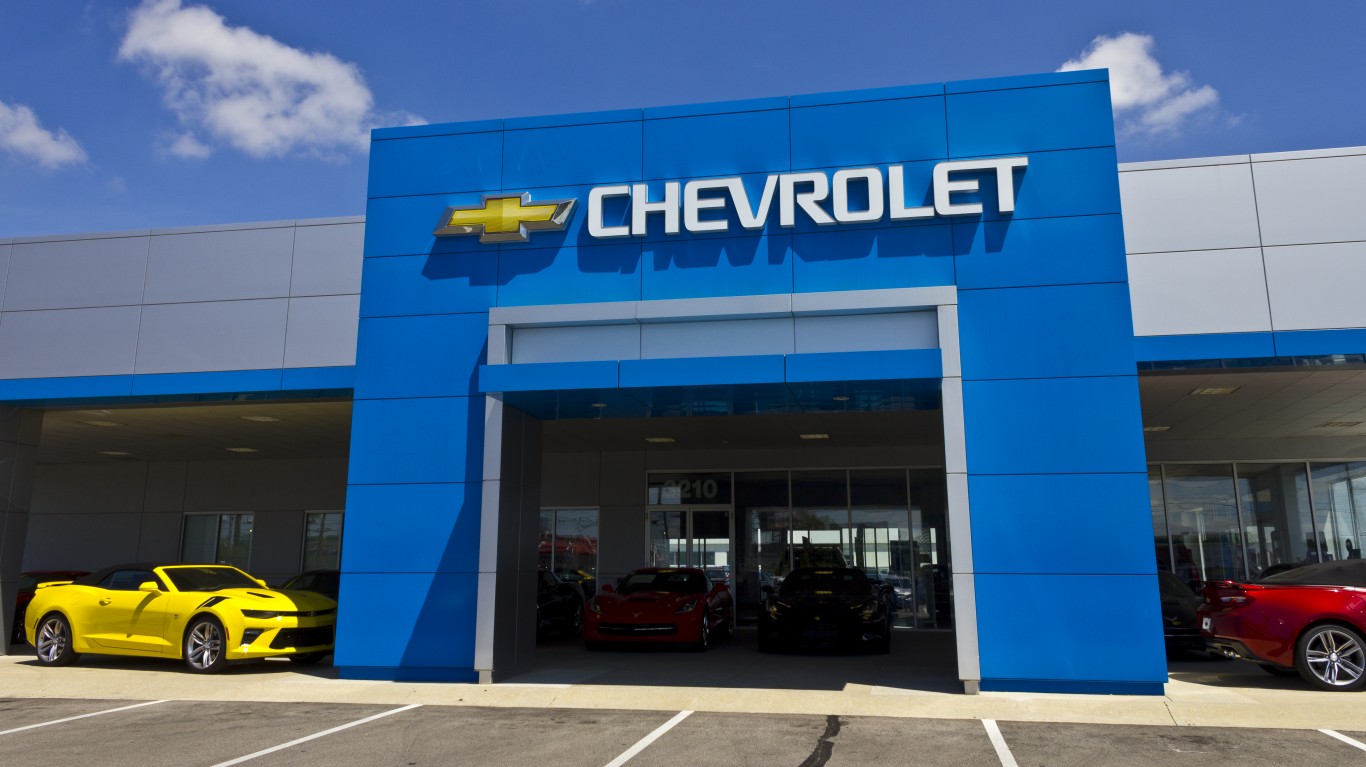
Unsurprisingly, General Motors’ dominance continued into the 1990s. One of the longest streaks of American corporate dominance, the 1990s was highlighted by some major expansions for GM. Most notable is the explosion of the SUV market where GM was able to leverage many of its brands. Popular models like the Chevy Tahoe, GMC Yukon, and Cadillac Escalade all grew significantly in popularity during this time.
Also occurring during the 1990s was GM’s acquisition of Saab and Saturn. Buying Saab offered GM advanced technology while Saturn’s innovative manufacturing process helped GM lower production costs.
#2: Ford
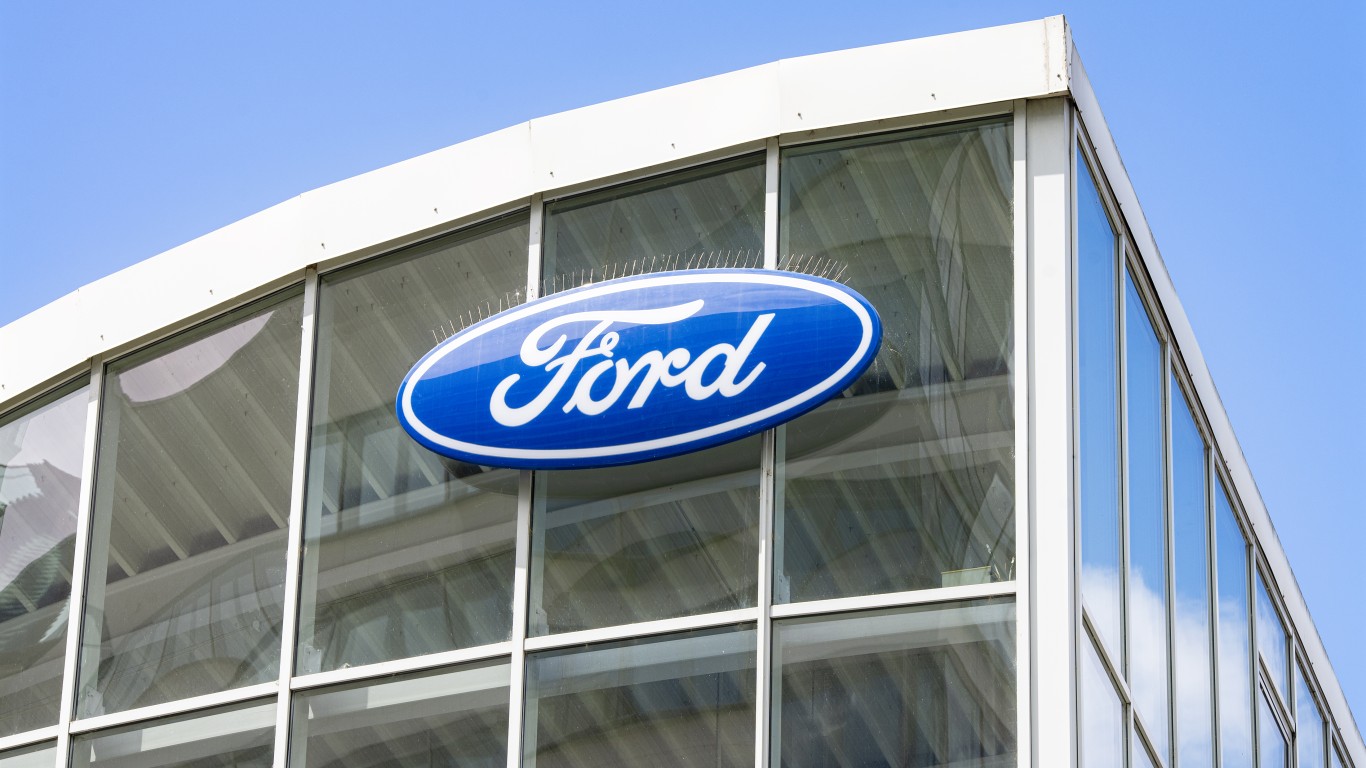
Among the biggest moments for Ford in the 1990s was the introduction of the Ford Explorer. Still one of America’s best-selling SUVs, the 1990 introduction of the Explorer was a huge moment for Ford. Additionally, Ford grew internationally during this decade and would look to expand its presence in countries like India and China.
Separately, the 1989 acquisition of Jaguar and Aston Martin would start to pay dividends in the 1990s. Aston Martin, in particular, would provide Ford with a foothold in the ultra-luxury sports car segment. This deal allowed it to acquire less value-minded customers and grow its margins.
#3: Walmart

The 1990s offered Walmart a significant opportunity to grow its business across the U.S. By increasing its presence both stateside and internationally, Walmart would become the largest retail store in the world. When considering both revenue and store count, Walmart was easily the largest retailer during the period. This massive growth was led by the creation of Walmart supercenters, which were introduced early in the decade.
These massive stores included groceries, electronics, apparel, and household items all under one roof. Plus, Walmart expanded its subscription brand, Sam’s Club, by opening new locations all over the U.S.
#4: AT&T
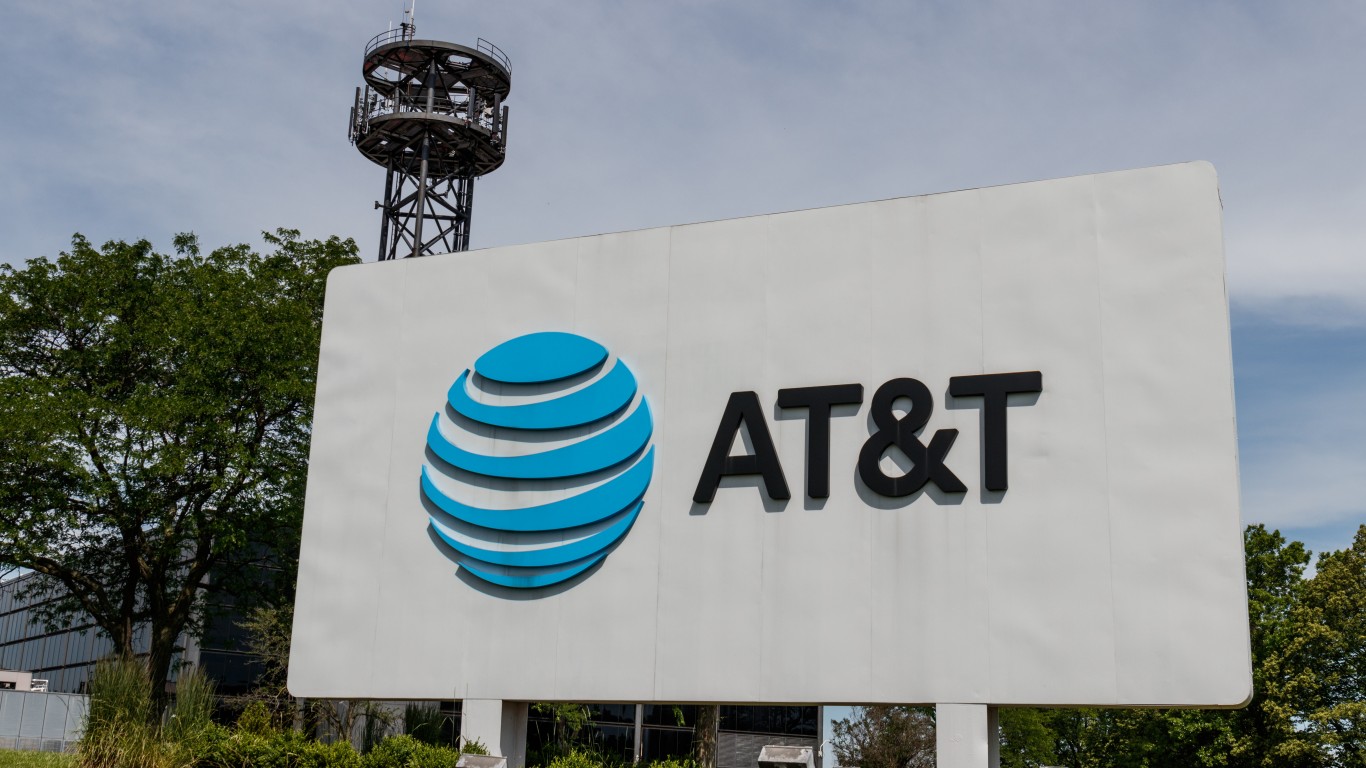
Throughout the 1990s, AT&T was reformulating its business after its government-mandated breakup in the 1980s. Even with this government action, AT&T’s move into the wireless market with its acquisition of McCaw Cellular Communications in 1995 gave AT&T a huge advantage. It’s this move that would enable AT&T to become the dominant mobile services provider in the U.S. for the next few decades.
During this period, AT&T would also look to reinvigorate its brand with massive marketing campaigns. Its famous “Your World. Delivered” was created in the 1990s to help emphasize its commitment to global communications.
#5: General Electric
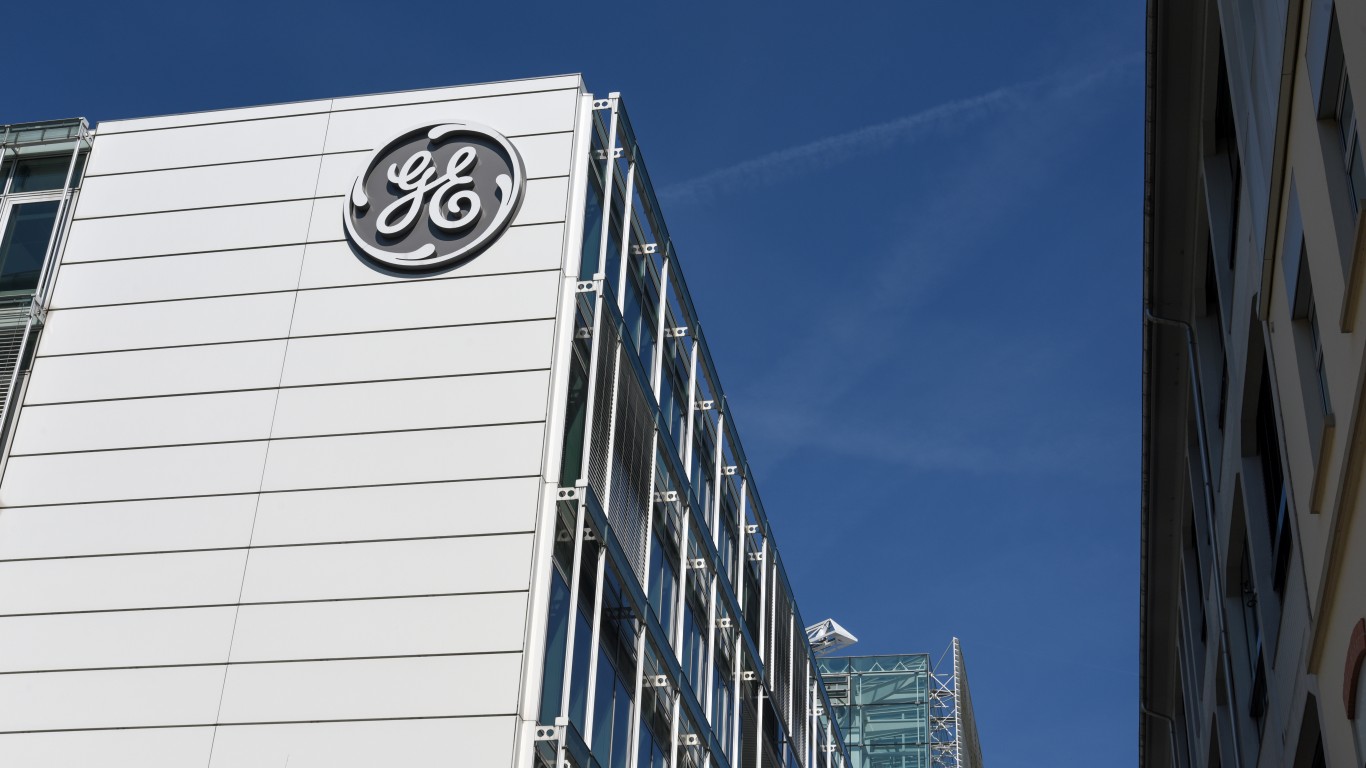
With Jack Welch coming into the CEO role during the 1980s, it was in the 1990s that he made his mark at GE. During this decade General Electric greatly grew its influence across healthcare, financial services, and aerospace technologies. One of the biggest moves was GE’s emphasis on GE Capital, its financial services division that was a major source of revenue during the 1990s.
Also during the 1990s, Six Sigma, now a major business program around the world today, was founded by Welch’s leadership team. This program helped drive significant improvement across the GE management chain resulting in productivity gains throughout the company.
#6: State Farm Insurance

Achieving major growth during the 1990s and ranking high on the Fortune 500 toward the latter part of the 1990s, State Farm Insurance remains a huge player. Expanding its insurance lineup to cover auto, life insurance, health insurance, and home coverage, State Farm became a dominant player in insurance coverage.
Looking to get into banking gave State Farm’s financial services opportunities increasingly new revenue models. The 1990s also saw State Farm adopt new customer service and claim processing models which drove increased customer satisfaction.
#7: Hewlett Packard
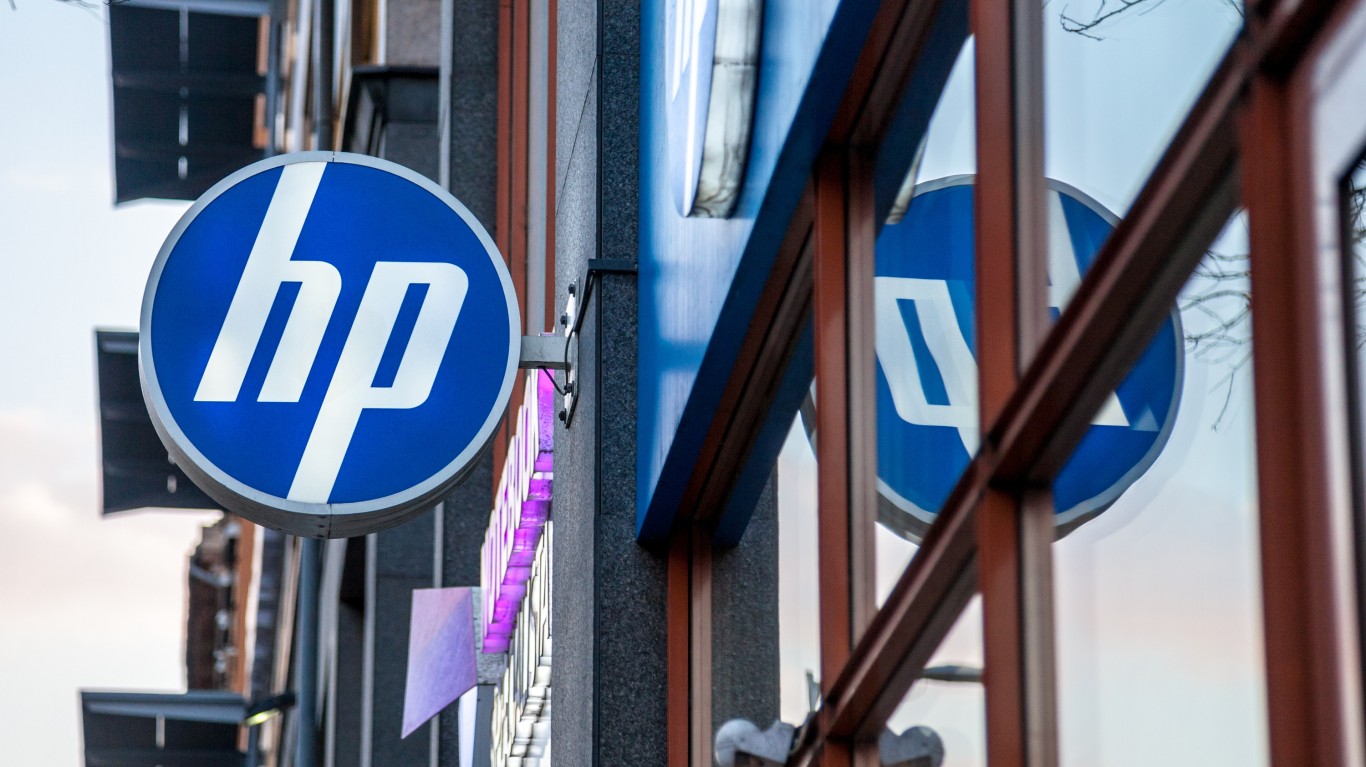
Now one of the largest computer manufacturers in the world, Hewlett Packard’s major growth occurred in the 1990s. It was during this time the company introduced new mainstays of its lineup. The HP Pavilion and Omnibook series would help drive significant market share for the HP brand. By acquiring Apollo Computer in 1989, HP was able to leverage Apollo’s strengths in the business arena.
HP expanded its printing business in a major way during the 1990s. Both HP DeskJet and HP LaserJet printers were introduced and remain major names in the print business.
#8: Sears Roebuck
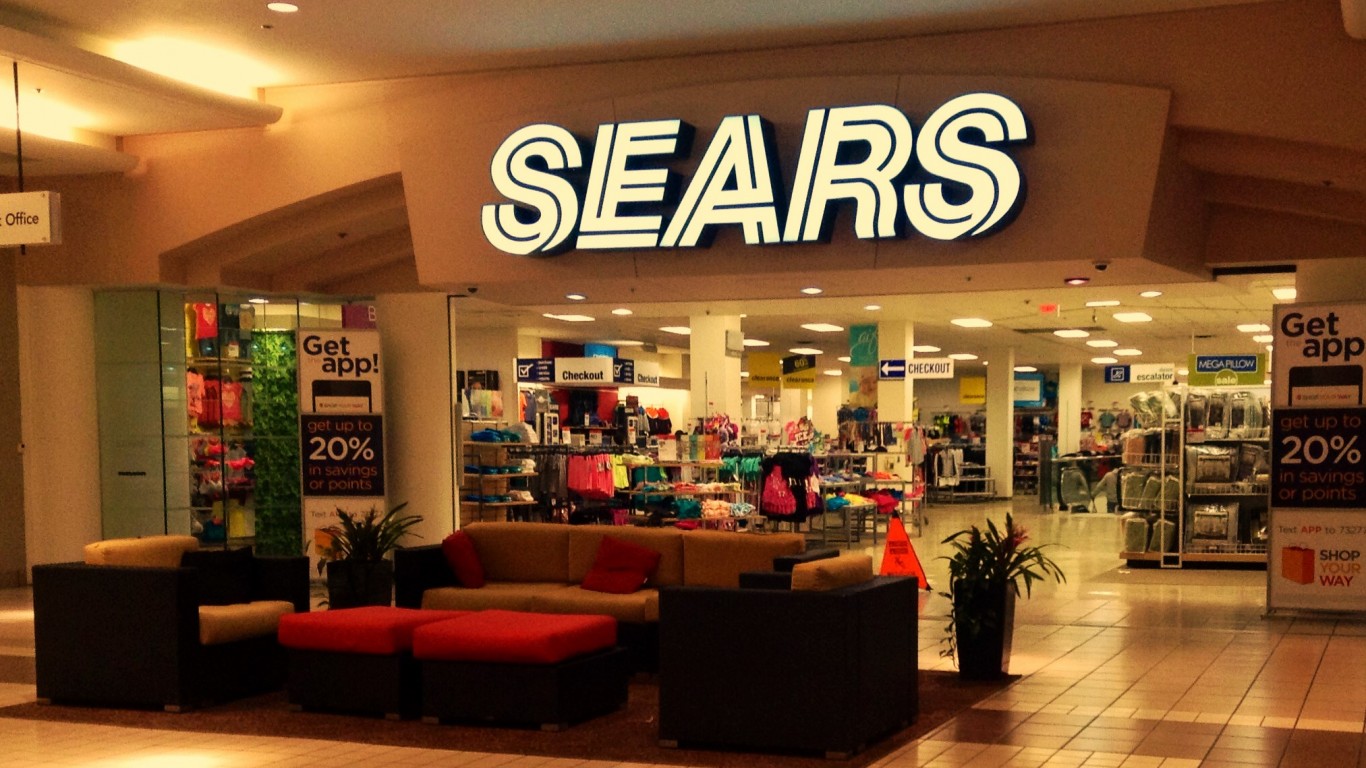
Even though Sears Roebuck was a part of the Fortune 20 during the 1990s, this was also the beginning of the end. During this decade, the rise of companies like Walmart, Target, and Home Depot would lead to increased price squeezing for Sears. As a result, it saw its market share erode and the toppling of a once-great American retail brand.
Even though Sears acquired Allstate Corporation in 1993, it couldn’t hold off the decline of Sears’ retail misfortunes. Hoping to diversify its revenue was a great move, but the 1990s would eventually see Sears begin to restructure and downsize its retail operations.
#9: PepsiCo

While the 1990s saw Pepsi continue to enjoy positive growth for its mainstay drink, it still saw opportunities beyond carbonation. One of the most notable PepsiCo moments during this period was its expansion into drinks like Gatorade, Lipton Brisk teas, and Aquafina bottled water. Not only did acquisitions help drive increased and diversified revenue for Pepsi, but it was also able to capture broader market shares across the board.
Additionally, Pepsi looked to expand into healthier drinks as the world started to be more health-conscious about food. Names like Diet Pepsi are now well known but were just beginning to show signs of Pepsico’s future.
#10: Target

While not as large as Walmart’s, Target’s growth as a retailer exploded in the 1990s. Expanding into more states and key markets, Target’s combination of stylish and affordable clothing helped it grow its market share. During this period, Target would also grow by launching its private-label brands. Today, Archer Farms, Up & Up, and Threshold are widely found at Target stores and are competitively priced against brand names.
It was also during the 1990s that Target looked to leverage celebrity partnerships for growth. Names like Mossimo, Isaac Mizrahi, and Phillippe Starck also looked to give Target a leg up in fashion and home goods over Walmart.
#11: Chase
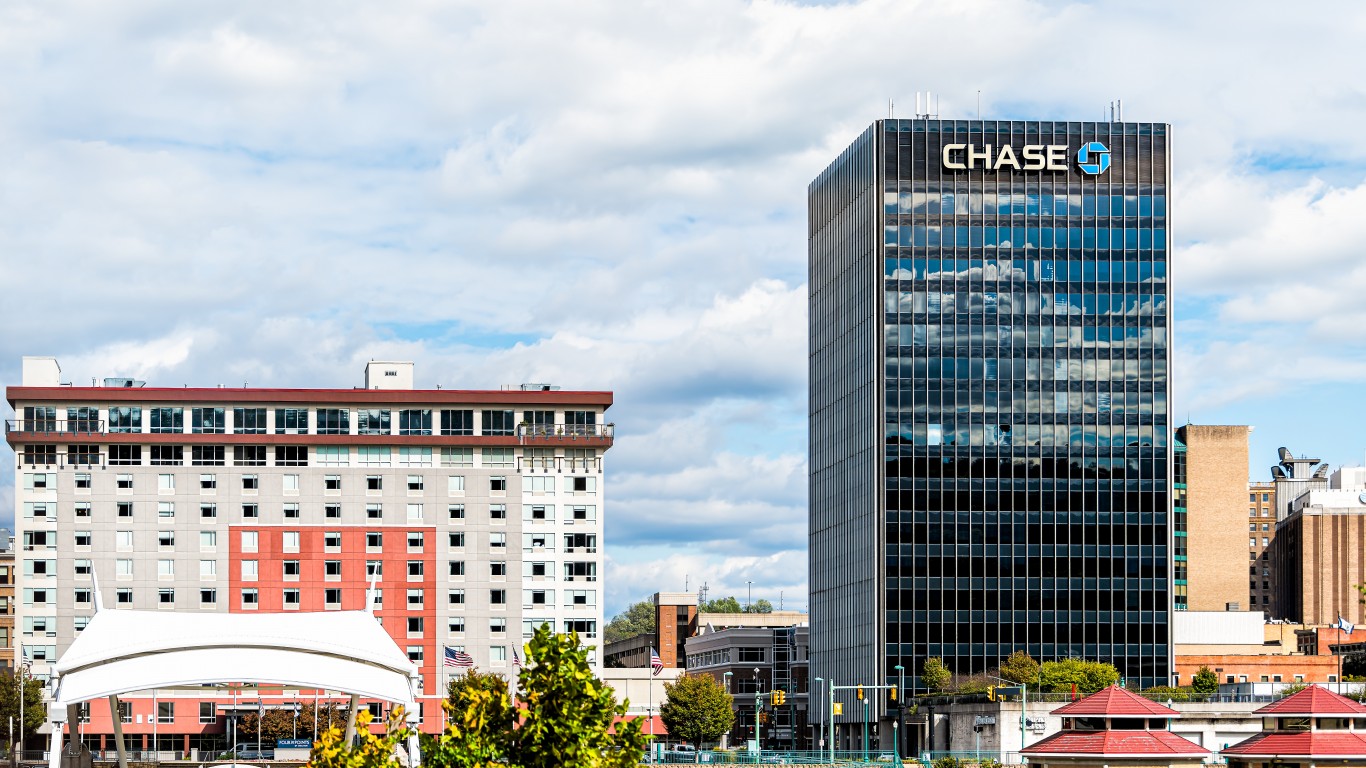
It was in 1996 that Chase Manhattan Corporation merged with Chemical Bank to form Chase Manhattan Bank. The resulting merger would form one of the most prominent banking institutions in the U.S. As a financial powerhouse, Chase Bank is a market leader across any number of financial services. Chase also looked to expand its business in the 1990s by creating more customer-friendly experiences.
This included focusing heavily on online banking and growing its ATM network. In addition, Chase would look to grow its business by making major moves internationally. Creating a worldwide market for Chase helped it grow as an international trade bank.
#12: Citibank
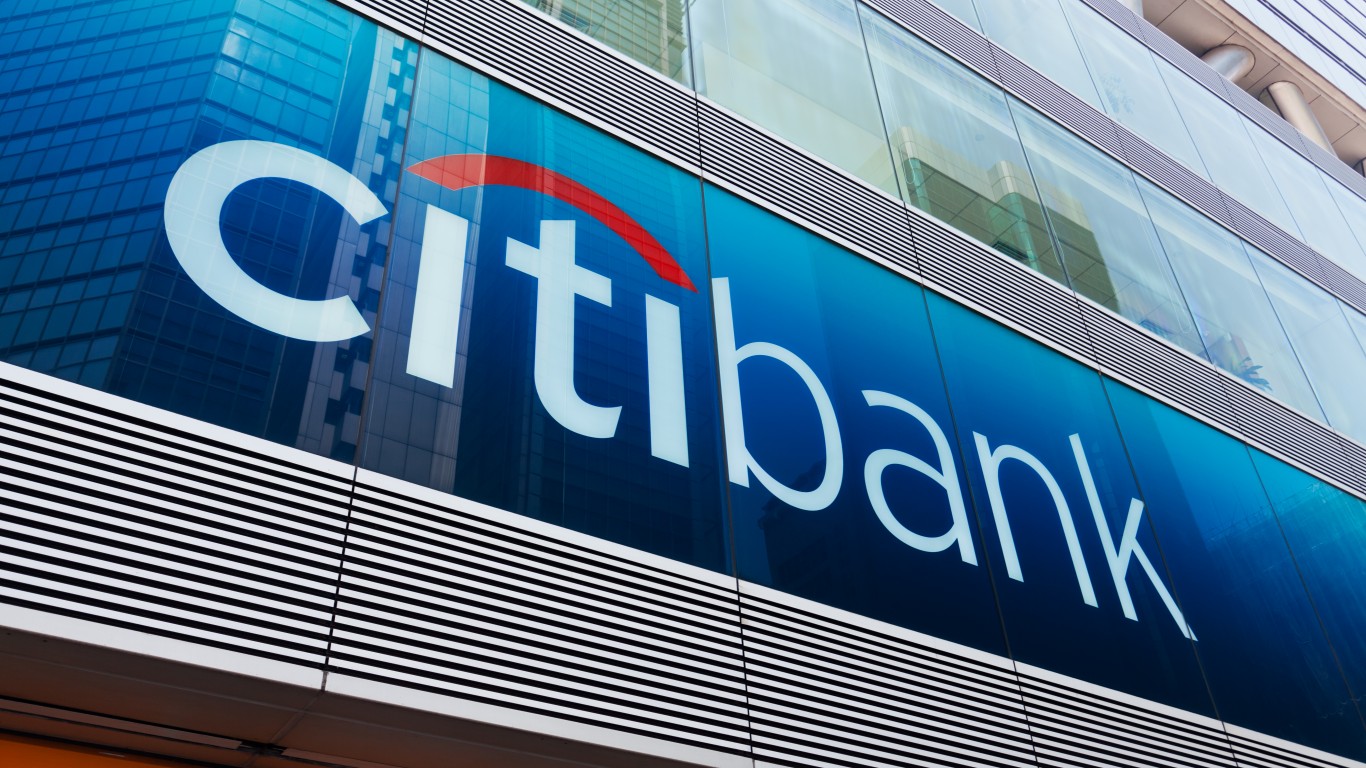
Alongside Chase, Citibank also saw big growth in the 1990s which helped it grow as a dominant corporate institution. Merging with Traveler’s Group in 1998, Citibank would become a major financial conglomerate and one of the most diversified banks in the world. Post-acquisition, Citibank includes banking, insurance, investment banking, and asset management as revenue streams.
Like Chase, Citibank saw the 1990s as an opportunity to introduce new technologies to its customers. Both online and mobile banking grew in the 1990s, which gave customers more intuitive ways to interact with Citibank.
#13: ExxonMobil
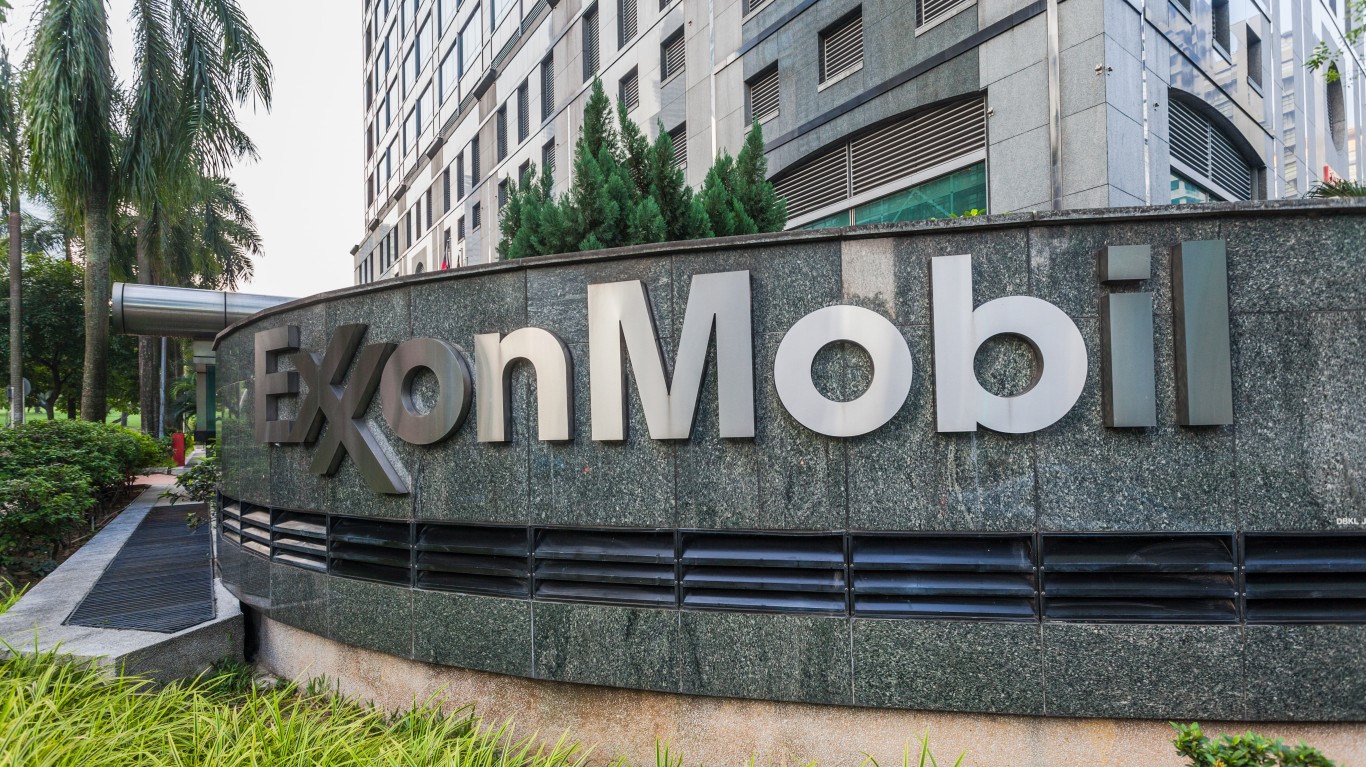
A consistent top name in the Fortune 500, ExxonMobil jockeyed with GM for the title of the largest American corporation by gross revenue. As part of Exxon’s growth, it announced a merger with Mobil Corporation in 1999. Now ExxonMobil, the brand was best known as one of the largest oil companies in the world. With its large market share, ExxonMobil was able to increase its global reach and strengthen its market share.
Exxon saw record profits multiple times in the 1990s and would use this revenue to innovate its mining equipment around the world.
#14: Bank of America
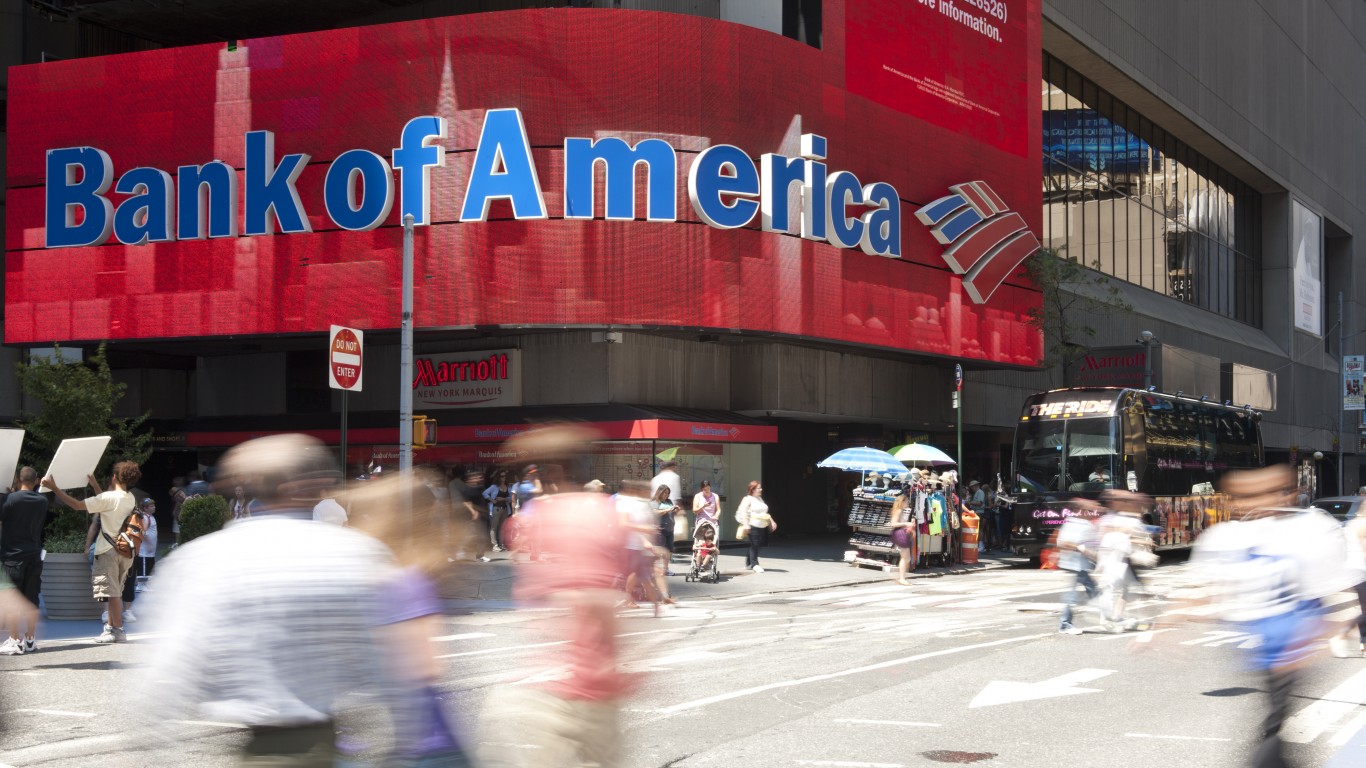
Another staple name in banking, Bank of America became one of the largest banks in the U.S. as of 1998. When BankAmerica merged with Nations Bank to form Bank of America, the resulting brand had a huge market share. Bank of America would use its growing revenue to acquire several regional banks during the 1990s to further grow its foothold across the U.S.
Bank of America would also use its growth during the 1990s to increase its offerings to customers. It introduced wealth management, mortgage lending, and insurance services across its banking footprint.
#15: Kmart
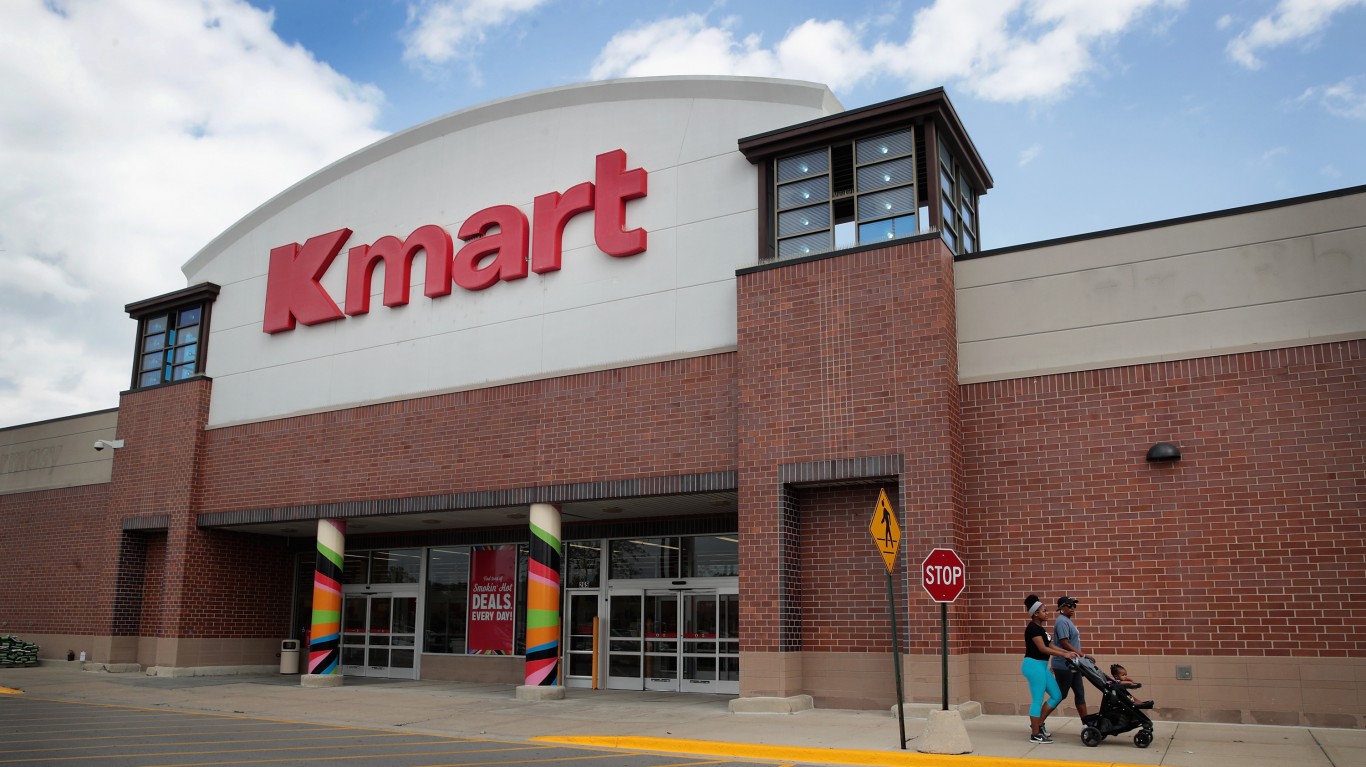
At the start of the 1990s, Kmart was one of the best and brightest names in retail. Unfortunately, with Walmart and Target growing significantly during the 1990s, Kmart’s early decade fortunes would turn around. By the end of the 1990s, Kmart would see sales decline and shareholder concerns escalate. With retail stores needing a major makeover, Kmart attempted to turn around its fortunes throughout the 1990s. Bluelight Specials are a staple aspect of the Kmart brand but were not enough to attract customers back into stores.
By the time 2005 rolled around, Sears acquired Kmart but it continues to be remembered as a pioneer in the discount retail space.
#16: Boeing
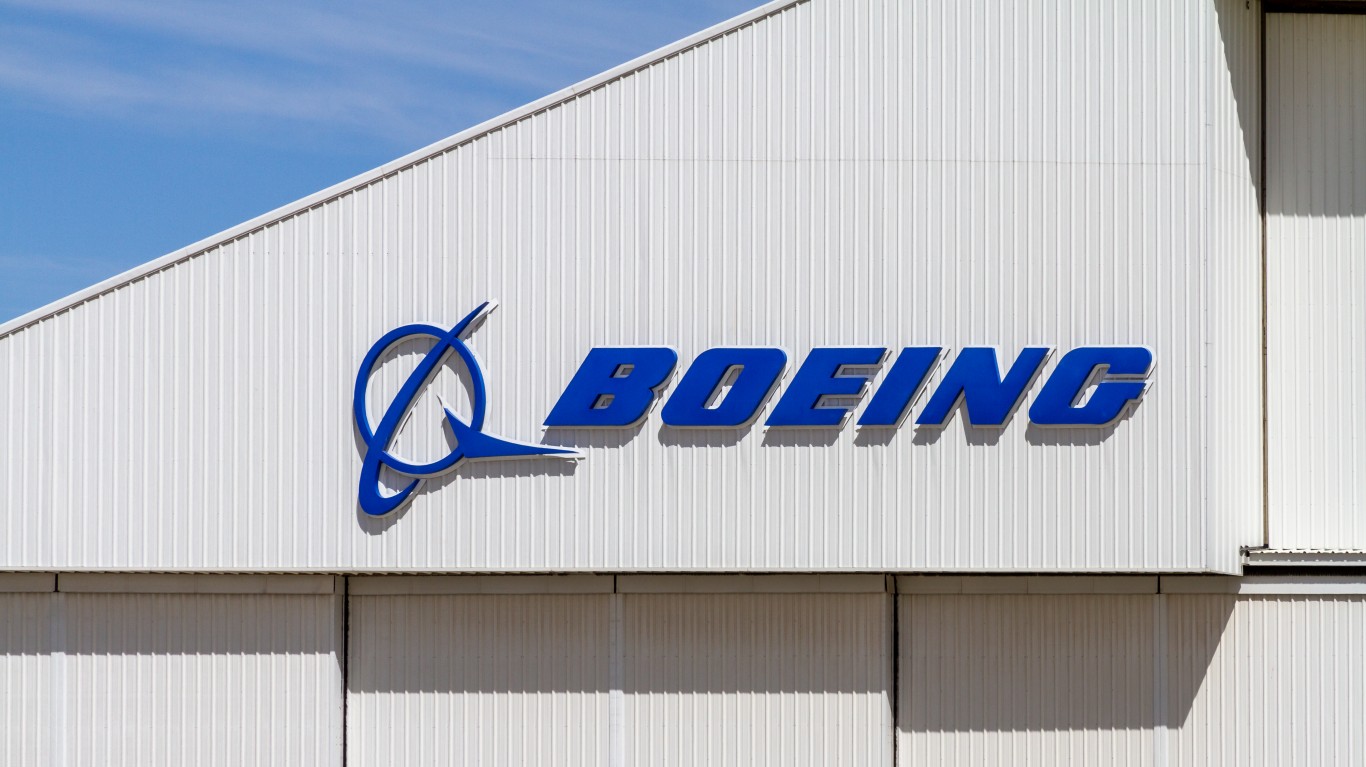
A staple name in the aerospace business, the 1990s were very favorable for the Boeing corporation. The introduction of new airplane models like the Boeing 777, Boeing 737, and other improvements to existing models helped Boeing grow. Boeing’s biggest 1990s moment was undoubtedly its merger with McDonnell Douglas, which was the biggest aerospace merger at the time.
As a result of this merger, Boeing found itself with a strong foothold in both military and space aerospace sectors. Boeing quickly became the largest aerospace company relegating Airbus to a solid second place. Among its military accomplishments were the Apache attack helicopter and F/A-18 Hornet fighter jet.
#17: Procter & Gamble
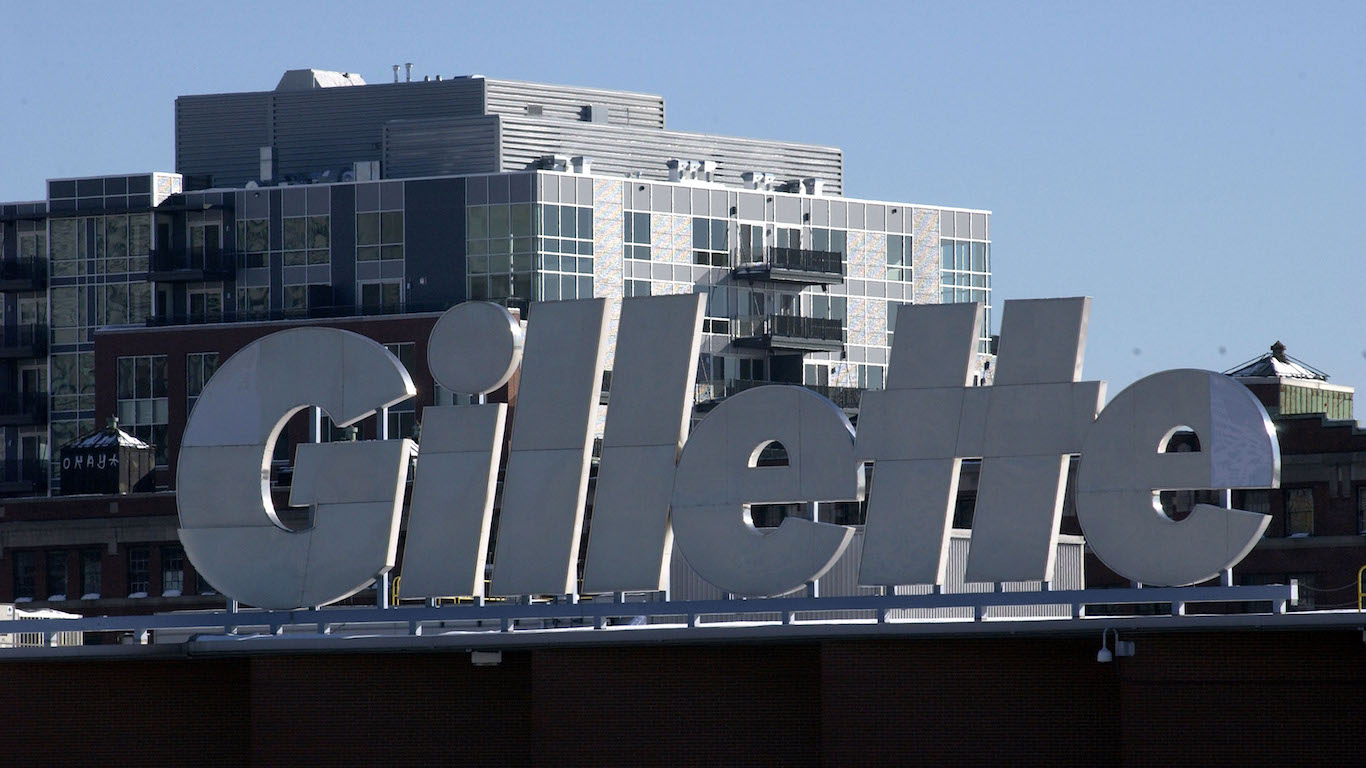
Already a major staple in consumer goods, Procter & Gamble grew significantly during the 1990s. As a result of major growth in Asia and Latin America, P&G was able to diversify its markets. P&G used this decade to expand the lineups of major brands like Gillette, Crest, Pampers, and Tide.
Through several acquisitions, P&G was also able to focus on new areas of growth outside of its core consumer goods market. Also, P&G grew its marketing efforts significantly to sponsor high-profile events to reach new audiences.
#18: 3M
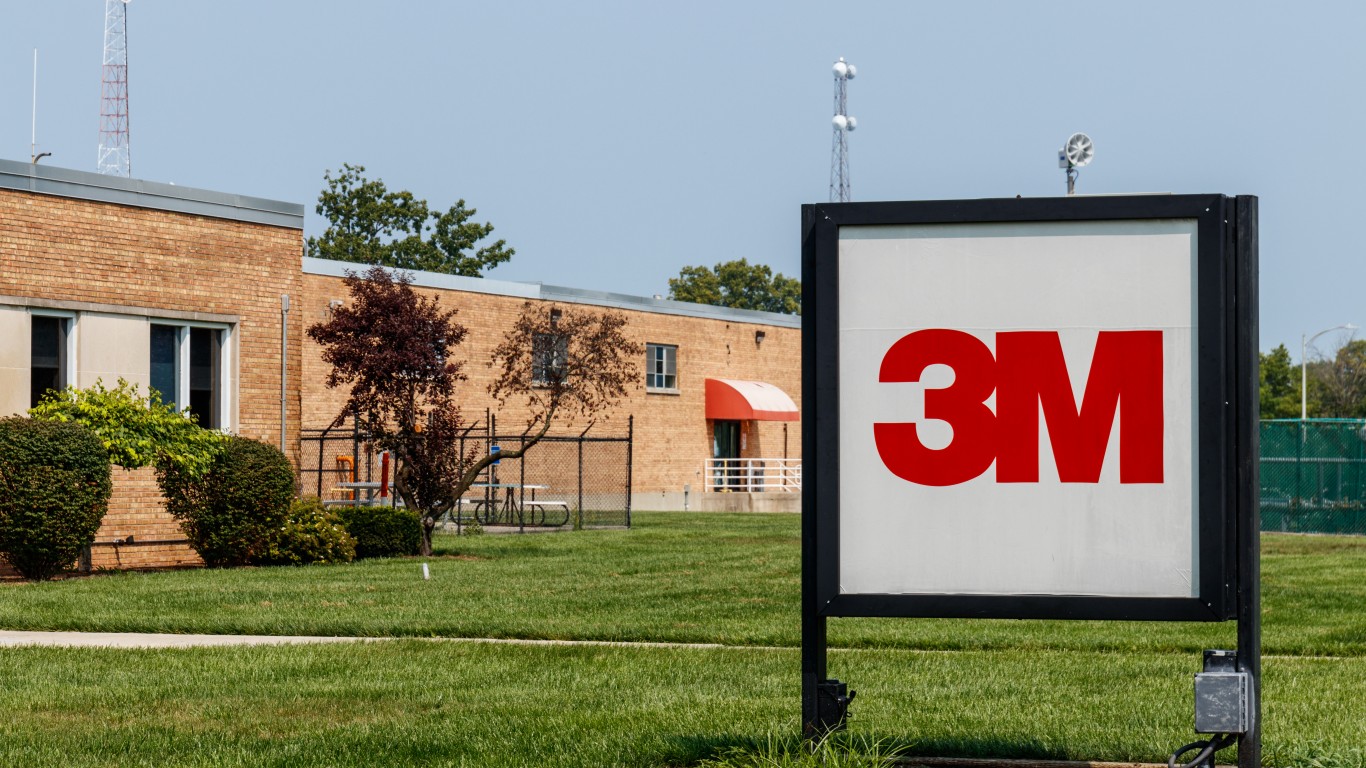
While just outside the Fortune 20, it’s hard to look at the 1990s and not mention 3M. The existence of business staples like Post-it notes, Thinsulate insulation, and Scotchlite reflective material are all a result of 1990’s R&D out of 3M. Beyond consumer products, 3M also looked to use the 1990s as an opportunity to diversify its core markets.
Introducing new products in electronics, healthcare, and telecommunications, 3M would allow itself new growth opportunities and increased revenue potential. On the subject of expansion, 3M also looked to grow outside America by building new manufacturing facilities in Asia, Latin America, and Eastern Europe.
#19: Motorola
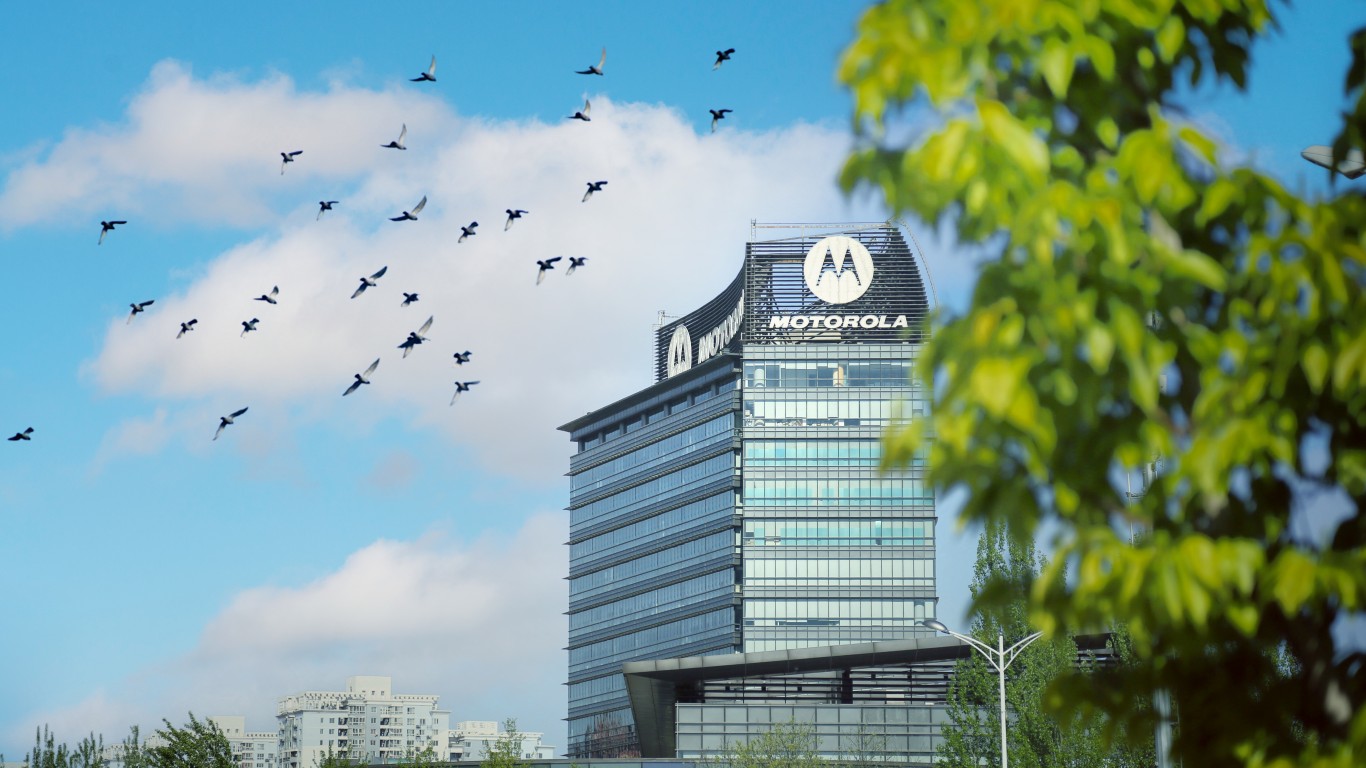
The 1990s were very favorable to Motorola which enjoyed significant revenue and growth during this era. It’s tough to understate the contributions Motorola made in the 1990s that helped expand the cellular technology space. Motorola’s first commercial digital cellular phone, the Motorola 3200 was a major move in 1992.
Alongside this intro, the MicroTac was popularized in the 1990s as one of the best phones around. However, the StarTAC, introduced by Motorola in 1996 would become one of the world’s most popular and best-selling phones.
#20: J.C. Penney
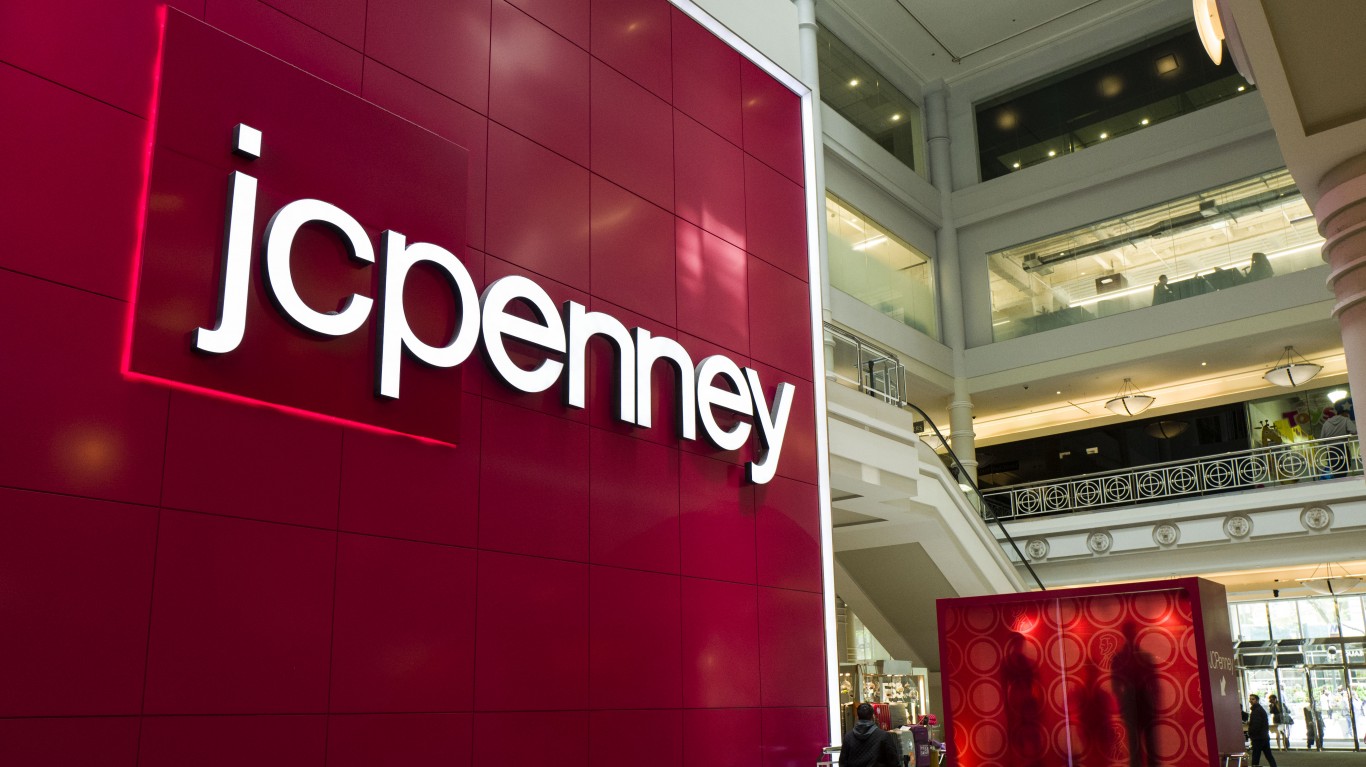
Like Sears, J.C. Penney saw its initial 1990s fortunes grow by expanding its retail footprint early on in the decade. By modernizing its stores, J.C. Penney was able to enter higher-end malls and looked to attract customers with greater spending capabilities. The introduction of J.C. Penney’s private label brands like Stafford and St. John’s Bay were affordable options to larger national brands.
Additionally, J.C. entered into strategic partnerships with the Cindy Crawford Home Collection and the Nicole Miller Collection to become a fashion leader. Unfortunately, by the end of the decade, J.C. Penney would see its fortunes decline as it lost ground to competitors.
Are You Still Paying With a Debit Card?
The average American spends $17,274 on debit cards a year, and it’s a HUGE mistake. First, debit cards don’t have the same fraud protections as credit cards. Once your money is gone, it’s gone. But more importantly you can actually get something back from this spending every time you swipe.
Issuers are handing out wild bonuses right now. With some you can earn up to 5% back on every purchase. That’s like getting a 5% discount on everything you buy!
Our top pick is kind of hard to imagine. Not only does it pay up to 5% back, it also includes a $200 cash back reward in the first six months, a 0% intro APR, and…. $0 annual fee. It’s quite literally free money for any one that uses a card regularly. Click here to learn more!
Flywheel Publishing has partnered with CardRatings to provide coverage of credit card products. Flywheel Publishing and CardRatings may receive a commission from card issuers.
Thank you for reading! Have some feedback for us?
Contact the 24/7 Wall St. editorial team.
